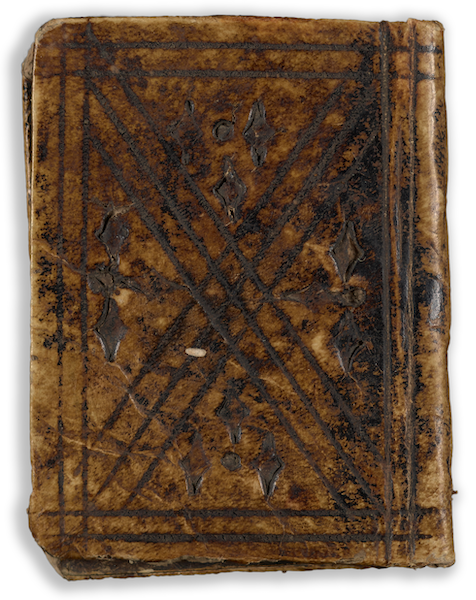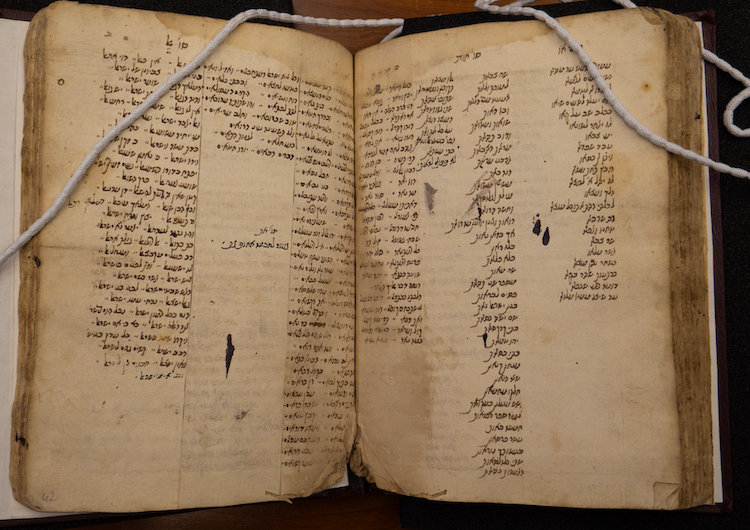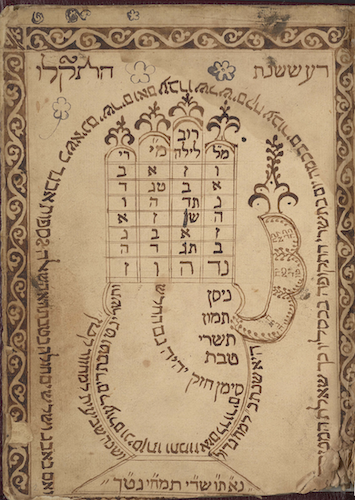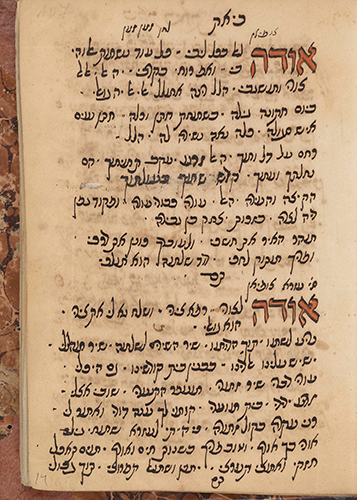Plague, Poetry, and Prayer: Three Manuscripts Join the Penn Libraries
A selection of fascinating new items in our collections
[Bakashot book]: Aleppo (nineteenth century): 8–9. CAJS RAR MS 670.
Recent newsletters have shared a few of the exciting new collection items that Schottenstein-Jesselson Curator of Judaica Collection Arthur Kiron acquired, such as a Yiddish translation of Romeo and Juliette, a collection of stories for children written by Anne Frank, a manuscript of kabbalistic remedies and charms, and an engraved dagger. But the collection continues to grow. Read below about three new additions to the Judaica collections at Penn.

Hebrew manuscript written on parchment of prayers against plagues, Italy (eighteenth/nineteenth centuries) (CAJS Rar Ms 656).
One new work is a diminutive (only 9.2 cm by 6.5 cm), twelve-leaf manuscript which retains its original parchment binding (pictured above). It includes various psalms and verses as well as a prayer for ceasing the plague. Most of the text is written in square script, but instructions are written in Rashi script. Find the full catalog record here.
Acquired thanks to the generous support of the Library at the Katz Center Rare Judaica Endowment.

An eighteenth-century Hebrew manuscript anthology of sample letters and language by Moroccan Jewish religious scholars, including from the Ibn Tzur rabbinic family, copied in a cursive maghrebi (North African) script (CAJS Rar Ms 661 ).
 This manuscript is bound simply in maroon faux leather and includes two collections of sample letters and poetic expressions, both titled Leshon Lipudim, one by one by R. Yaakov Ibn Tzur and the other by R. Shaul Serero. A third work, Leshon hahamim is a rhyming dictionary, written by R. Yitshak ben Yehudah Ha-Kohen Rapaport. The title page features calligraphy swirling around hand-drawn arches and ornamented with curving shapes resembling leaves and vines. A border of similar organic shapes surrounds the design. A few small flower doodles appear to have been added later. Kiron was intrigued by the possibility that this book may be an example of “conduct literature”—a genre popular in the late seventeenth and eighteenth centuries that offered advice on etiquette, writing correspondence, and other information that a young person may need in their back pocket in any given social situation. The manuscript also includes letters by other Moroccan Torah scholars. Find the catalog record here.
This manuscript is bound simply in maroon faux leather and includes two collections of sample letters and poetic expressions, both titled Leshon Lipudim, one by one by R. Yaakov Ibn Tzur and the other by R. Shaul Serero. A third work, Leshon hahamim is a rhyming dictionary, written by R. Yitshak ben Yehudah Ha-Kohen Rapaport. The title page features calligraphy swirling around hand-drawn arches and ornamented with curving shapes resembling leaves and vines. A border of similar organic shapes surrounds the design. A few small flower doodles appear to have been added later. Kiron was intrigued by the possibility that this book may be an example of “conduct literature”—a genre popular in the late seventeenth and eighteenth centuries that offered advice on etiquette, writing correspondence, and other information that a young person may need in their back pocket in any given social situation. The manuscript also includes letters by other Moroccan Torah scholars. Find the catalog record here.
Above: CAJS Rar Ms 661 open to pages 61 and 62.
Right: CAJS Rar Ms 661 title page.
Acquired thanks to the generous support of the Elis and Ruth Douer Endowment for Sephardic Studies.

A late nineteenth-century Hebrew manuscript compilation of hundreds of Syrian Jewish petitionary prayers (bakashot) and liturgical poems (piyutim) copied in Aleppo, Syria), in its original binding with a leather spine (CAJS Rar Ms 670)
Numerous songwriters and hymnists stretching across generations contributed around 450 individual works to this small-format manuscript. Some of the named writers within the brown, marbled covers are rabbis Ya'akob Abadi, Yeshua Sassoon, Yeshayah Atiyah, Ezra Atiyah, Yitshak Dabah, Raphael Shalem, Miha’el ha-Kohen. In many liturgical poems, the poet uses his own name as an acrostic in the poem itself—using each letter of his name to start the letter of a line—and from this we can glean the first names, though not the last, of several other authors. This book, while not as tiny as the prayers against plagues listed above, is easily smaller than my outstretched hand. Short lines of text painted in red with dark, bold outlines while a few other words sport only the dark outlines. Find the full catalog record here.
Above left: CAJS Rar Ms 670 page 14.
Acquired thanks to the generous support of the Elis and Ruth Douer Endowment for Sephardic Studies.
